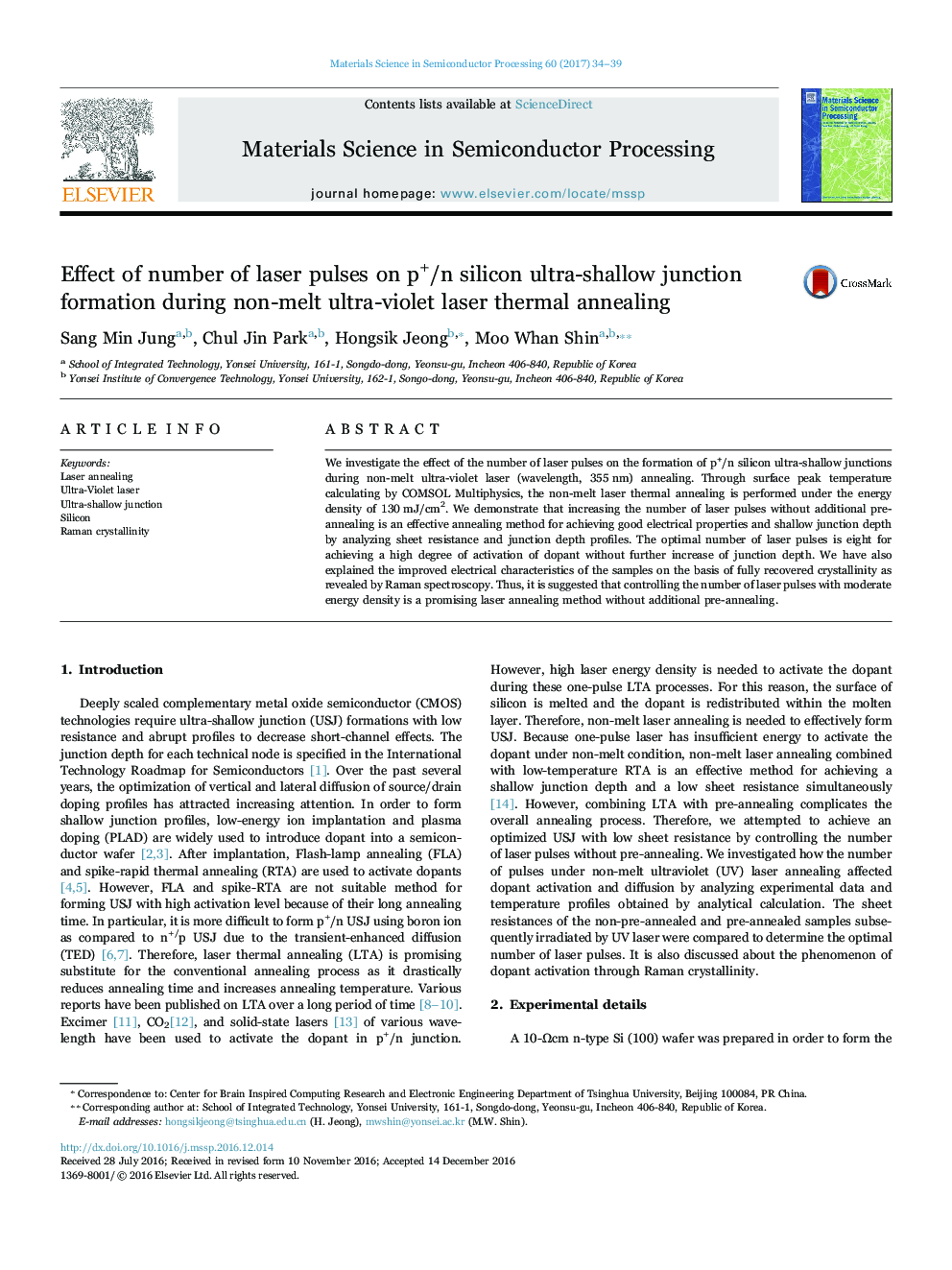| Article ID | Journal | Published Year | Pages | File Type |
|---|---|---|---|---|
| 5006185 | Materials Science in Semiconductor Processing | 2017 | 6 Pages |
Abstract
We investigate the effect of the number of laser pulses on the formation of p+/n silicon ultra-shallow junctions during non-melt ultra-violet laser (wavelength, 355Â nm) annealing. Through surface peak temperature calculating by COMSOL Multiphysics, the non-melt laser thermal annealing is performed under the energy density of 130Â mJ/cm2. We demonstrate that increasing the number of laser pulses without additional pre-annealing is an effective annealing method for achieving good electrical properties and shallow junction depth by analyzing sheet resistance and junction depth profiles. The optimal number of laser pulses is eight for achieving a high degree of activation of dopant without further increase of junction depth. We have also explained the improved electrical characteristics of the samples on the basis of fully recovered crystallinity as revealed by Raman spectroscopy. Thus, it is suggested that controlling the number of laser pulses with moderate energy density is a promising laser annealing method without additional pre-annealing.
Related Topics
Physical Sciences and Engineering
Engineering
Electrical and Electronic Engineering
Authors
Sang Min Jung, Chul Jin Park, Hongsik Jeong, Moo Whan Shin,
